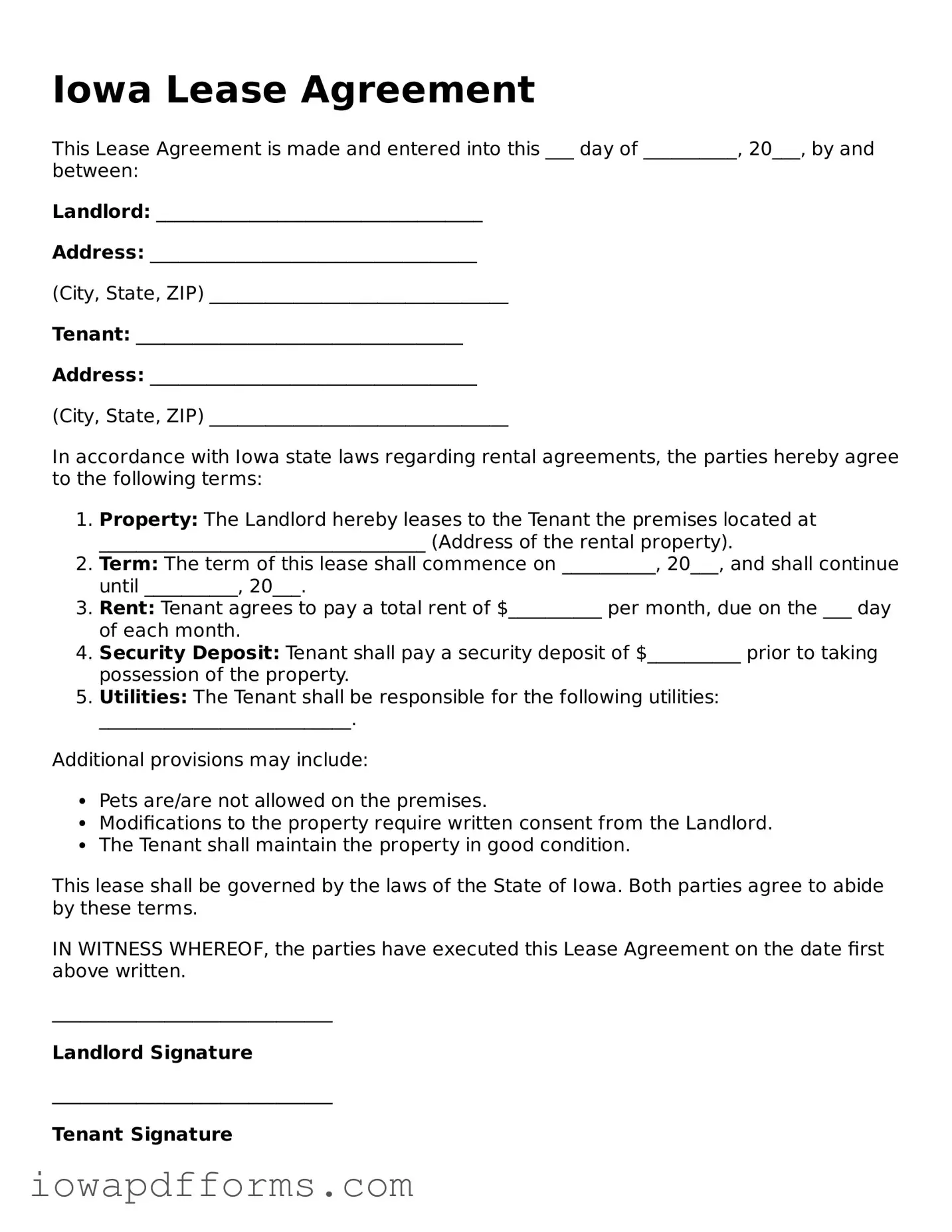The Iowa Lease Agreement form shares similarities with the Residential Lease Agreement. Both documents establish the terms under which a tenant may occupy a property. They outline the responsibilities of both the landlord and tenant, including payment of rent, maintenance obligations, and rules regarding the use of the property. Each agreement aims to protect the rights of both parties while ensuring a clear understanding of expectations during the lease term.
For those considering property transfers, a vital resource is the guide to understanding the Quitclaim Deed process, which can be explored further at this comprehensive Quitclaim Deed overview.
Another document that resembles the Iowa Lease Agreement is the Commercial Lease Agreement. This type of lease is specifically designed for businesses renting commercial space. Like the Iowa Lease Agreement, it specifies the duration of the lease, rental payments, and maintenance responsibilities. However, it often includes additional clauses related to business operations, such as signage rights and permitted use of the space, which are not typically found in residential leases.
The Month-to-Month Rental Agreement is also similar to the Iowa Lease Agreement. This document allows tenants to occupy a property on a month-to-month basis, providing flexibility for both parties. While the Iowa Lease Agreement may have a fixed term, a month-to-month agreement can be terminated with proper notice from either party. Both agreements outline rental amounts and responsibilities but differ in their duration and termination conditions.
The Sublease Agreement is another document that has parallels with the Iowa Lease Agreement. A sublease allows a tenant to rent out a portion or all of their leased property to another individual. Similar to the Iowa Lease Agreement, it details the terms of occupancy, rent, and responsibilities. However, the original tenant remains responsible to the landlord, which adds a layer of complexity not present in a standard lease.
The Lease Option Agreement is also akin to the Iowa Lease Agreement. This document provides a tenant the option to purchase the property at a later date while they are renting it. It includes terms similar to a standard lease, such as rent and duration, but adds specific conditions regarding the purchase. This agreement can benefit both parties by allowing tenants to secure a property while considering a purchase.
The Rent-to-Own Agreement is similar in concept to the Lease Option Agreement. In this arrangement, a portion of the rent paid goes toward the purchase price of the property. Like the Iowa Lease Agreement, it outlines the terms of rental payments and responsibilities. However, it emphasizes the eventual transfer of ownership, making it distinct in its purpose and structure.
Lastly, the Fixed-Term Lease Agreement bears resemblance to the Iowa Lease Agreement. This type of lease sets a specific duration for the tenancy, similar to the Iowa form. Both documents detail rental terms, maintenance obligations, and rules for the property. The main difference lies in the length of the lease, as fixed-term agreements typically last for a year or more, while the Iowa Lease Agreement may have varying terms based on the needs of the landlord and tenant.
